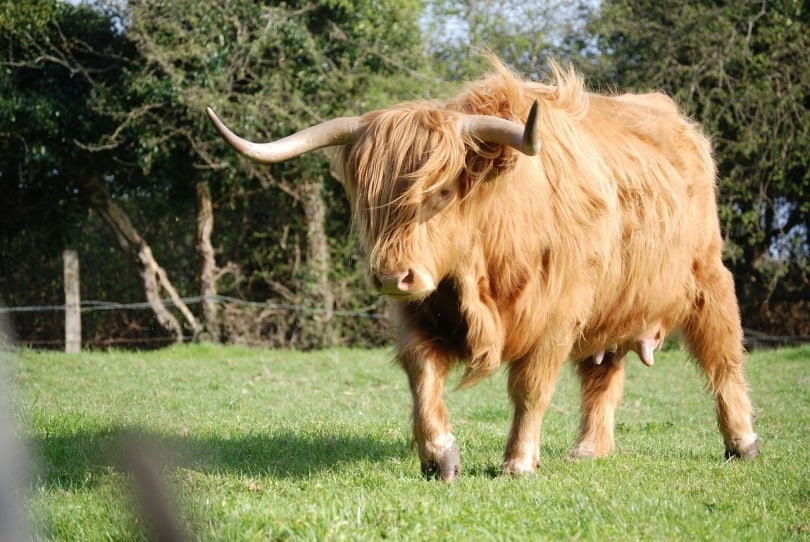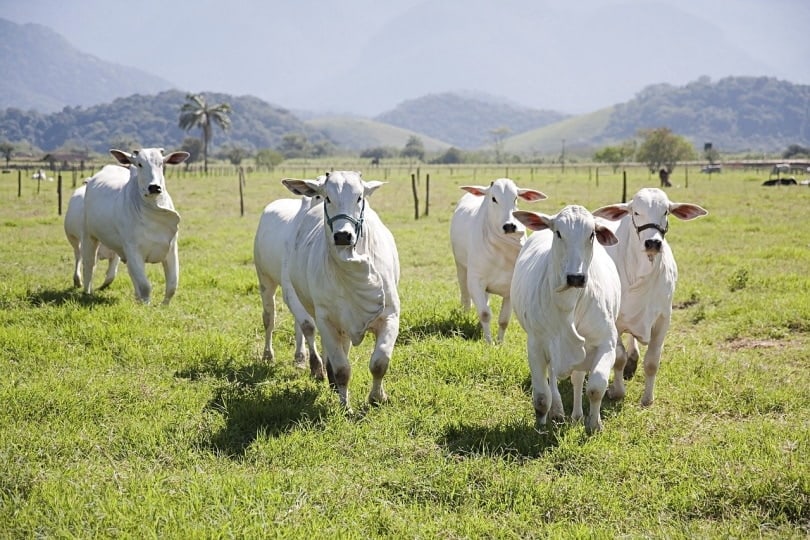Most of us have an image of a cow lazily grazing in a field and moving slowly. Cows can move quickly if needed, however. If you’re facing an attack from a cow, trying to outrun it may not be your best option.
How fast can cows run? On average, cows can run 17 miles per hour, though some have been recorded running as fast as 25 miles per hour.

Can a Cow Run Faster Than a Human?

Cows can run up to 25 miles per hour. Humans have wildly different running speeds, but the average human can run between 6.2 miles per hour and 8.7 miles per hour. The speed varies according to age, gender, body size, and fitness.
The fastest human speed was Usain Bolt in 2009. He reached 27.8 miles per hour and currently holds the record for the fastest speed for men in the 100-meter sprint. The fastest speed for a woman in a 100-meter sprint is thought to be over 24 miles per hour, which was achieved by Florence Griffith Joyner in 1988.
The average human cannot outrun a cow. In fact, even professional athletes would be unlikely to outrun a cow. A startled cow can have a quick burst of speed and their cloven hooves have better purchase on soft or wet ground than a horse or human.

How to React to a Charging Cow

Cows may be docile, but they’re responsible for around 22 human deaths each year. An angry, defensive, or threatened cow will charge a person, especially as part of a group. Trying to outrun the cow is a surefire way to get injured or killed.
Humans have an advantage with agility, however. Cows have four legs and poor coordination in comparison to humans. They can’t change direction on a dime or make big moves while running.
Still, the best way to avoid an attack is not to provoke it in the first place. Cows will get defensive over calves or in the presence of dogs. You should avoid bringing dogs around cows or entering a cow pasture as much as possible.
- Don’t try to outrun the cow.
- Stay calm. Either walk away quickly and quietly or stay still.
- Don’t turn your back on the cow.
- Avoid eye contact with the cow.
- If a cow charges you, use a walking stick or another object to strike its nose as a form of self-protection. Avoid waving the weapon around, however, since it can agitate the cow more.
- If the cow is far away, run until you find a barrier or shelter. This is only advisable if you have plenty of distance to get a head start.
- If you have a dog, let go of the leash. Your dog can run off and you’ll avoid injury getting between the dog and the cow.
- With more than one cow, run to the nearest barrier or shelter and try to put something between yourself and the herd.
- If you have to run, make zig-zag patterns and change direction to gain an advantage.

Conclusion
Cows don’t run often, but when they do, they’re shockingly fast. On top of that, they have better traction on slippery surfaces than horses, giving them an advantage on grass or sand. If a cow charges, you won’t be able to outrun it, but you can use your agility to your advantage to get a head start and seek shelter or a barrier.
- Related article: How Many People Are Killed by Cows Each Year?
Featured Image Credit: Ane_Hinds, Pixabay
